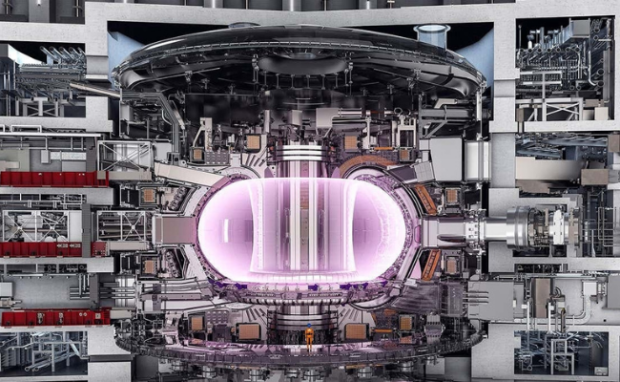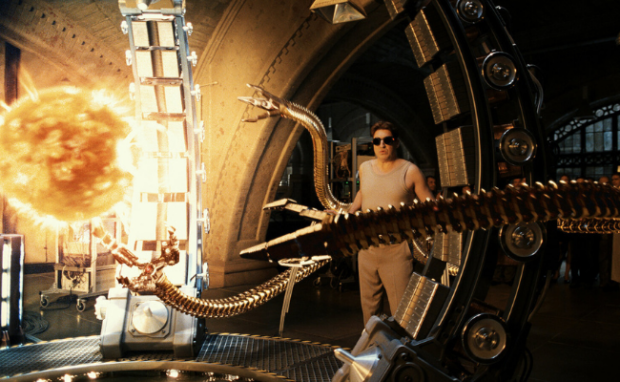The world’s biggest nuclear fusion reactor activates
In the 2004 film “Spiderman 2,” Doctor Octavius developed nuclear fusion technology to provide near-infinite energy worldwide. Recently, Japan activated the world’s biggest nuclear fusion reactor with a similar goal: to “bring us closer to fusion energy.” Also, that will mimic the process that takes place inside the sun.
Imagine if we could recreate such a reaction on Earth to provide almost limitless energy to everyone. That could eliminate or significantly reduce our reliance on fossil fuels, bringing us closer to a greener and more sustainable future. Moreover, it could give us more insights into our the Sun’s inner workings.
This article will discuss the goal of the nuclear fusion project and how it works. Later, I will explain this chemical reaction to explain the research further.
How does the nuclear fusion project work?

The European Union and Japan constructed and activated the first nuclear fusion reactor, the JT-60SA. Their goal is to confirm the feasibility of fusion as a safe, large-scale, and carbon-free source of net energy.
In other words, The Guardian says they want the process to generate more energy than the amount needed to produce it. This device is a six-storey-high machine with a donut-shaped “tokamak” vessel.
The Merriam-Webster Dictionary defines a tokamak as “a toroidal device for producing controlled nuclear fusion that involves the confining and heating of a gaseous plasma by means of an electric current and magnetic field.”
The JT-60SA will contain swirling plasma heated to 200 million °C or 360 million °F. It will cause hydrogen nuclei inside to fuse into one heavier element, helium, releasing energy as heat and light.
That will also recreate the process that occurs inside the sun. Sam Davis, the JT-60SA’s deputy project leader, said the device will “bring us closer to fusion energy.”
You may also like: Rare crystal forms from the first nuclear bomb test
“It’s the result of a collaboration between more than 500 scientists and engineers and more than 70 companies throughout Europe and Japan,” he added. Moreover, EU energy commissioner Kadri Simson said the JT-60SA was “the most advanced tokamak in the world.”
Simson also hailed the initial operations as “a milestone for fusion history.” Moreover, he claimed, “Fusion has the potential to become a key component for energy mix in the second half of this century.”
ScienceAlert says fusion does not pose the risk of nuclear disasters, unlike fission. For example, the 2011 Fukushima nuclear disaster showed how catastrophic the latter can be. Moreover, nuclear fusion produces less radioactive waste than current power plants.
How does nuclear fusion work?

I used the 2004 Spiderman film as an example to help explain how fusion works. After all, the character Doctor Octavius even says, “The power of the sun, at the palm of my hand,” when it seemed his project was working.
The movie uses nuclear fusion as a plot point, but it is a real-life physical phenomenon. ScienceAlert says it describes the physics of two or more atomic nuclei merging to create larger elements.
Atoms grow as their protons aggregate into larger and larger groups bound by the strong nuclear force. That attraction arises from interactions between their trios of quark particles.
You may also like: Stanford paint can reduce energy use and your bills
The Coulomb force, the attraction of repulsion force between particles due to their electric charges, causes protons to distance themselves from each other. On the other hand, their neutrons have no charge.
That enables them to move closer to protons and electrons with little effort. As a result, proton-neutron pairs can bind to each other to form a simple atomic nucleus.
The collection of particles has less energy than when they were apart. Consequently, merging emits that excess energy into the universe. The sun uses the same process, releasing the surplus energy as sunlight on Earth.
Conclusion
Japan recently activated the world’s largest nuclear fusion reactor, the JT-60SA. It will mimic the inner workings of the sun to help scientists study it further.
More importantly, it could become a safer and more powerful alternative to nuclear fission. As a result, it could usher in a greener, brighter tomorrow.
Our scientists have also been developing other potential green energy sources. Learn more about them and other digital trends at Inquirer Tech.